- TWO types of sweet pepper feeding
- 1. Organic feeding
- 2. Synthetic feeding
- Conclusion
- One variant of feeding sweet pepper
- Introduction
- The One Variant
- Application
- Conclusion
- The other variant of feeding sweet pepper
- Benefits of feeding sweet pepper in the ground
- Nutrient-rich soil
- Improved plant health
- Increased yield
- Environmental sustainability
- Cost-effective
- Positive effects of feeding sweet pepper in the ground
- 1. Increased growth and yield
- 2. Improved plant health
- 3. Enhanced fruit quality
- 4. Extended fruiting period
- 5. Overall plant vigor
- 6. Sustainable gardening
- Conclusion
- Comparison of the two feeding methods
- Method 1: Organic fertilizer
- Method 2: Liquid fertilizer
- Similar impact of both feeding methods on sweet pepper
- Method 1: Traditional soil fertilization
- Method 2: Foliar feeding
- Factors to consider when choosing a feeding method for sweet pepper
- “Question-Answer”
- What are the two variants of feeding sweet pepper?
- What is the effect of planting sweet pepper in the ground?
- Are there any other methods of feeding sweet pepper?
- Can you explain the difference between the two variants of feeding sweet pepper?
- Are there any factors that may affect the positive effect of planting sweet pepper in the ground?
- “Video” 5 Pepper Growing Mistakes to Avoid
The cultivation of sweet pepper is a popular choice among gardeners due to its delicious taste and versatility in cooking. Whether you prefer to grow your own sweet peppers or buy them at the local market, one thing is for sure: proper feeding is essential for a successful harvest. In this article, we will explore two different methods of feeding sweet pepper plants planted in the ground and compare their effects on growth and fruit production.
The first method involves using organic fertilizers, such as compost or manure, to provide the necessary nutrients for the plants. Organic fertilizers are rich in essential minerals and micronutrients that promote healthy growth and improve soil fertility. They are also environmentally friendly and safe to use, making them an excellent choice for organic gardeners.
The second method involves using chemical fertilizers, which are formulated with specific ratios of nitrogen, phosphorus, and potassium to meet the nutritional needs of the plants. Chemical fertilizers are often more readily available and provide a quick boost of nutrients to the plants. However, they can be harmful to the environment if not used correctly, and their excessive use can lead to nutrient imbalances in the soil.
Both methods have their advantages and disadvantages, but studies have shown that both can effectively promote the growth and fruit production of sweet pepper plants. The choice between organic and chemical fertilizers ultimately depends on personal preferences and gardening practices. Whether you opt for organic or chemical fertilizers, the key is to provide your sweet pepper plants with a balanced and consistent supply of nutrients throughout the growing season.
TWO types of sweet pepper feeding
Sweet pepper is a popular vegetable that can be grown in home gardens or commercial farms. In order to ensure healthy growth and a bountiful harvest, proper feeding is essential. There are two main types of feeding that can be used for sweet peppers:
1. Organic feeding
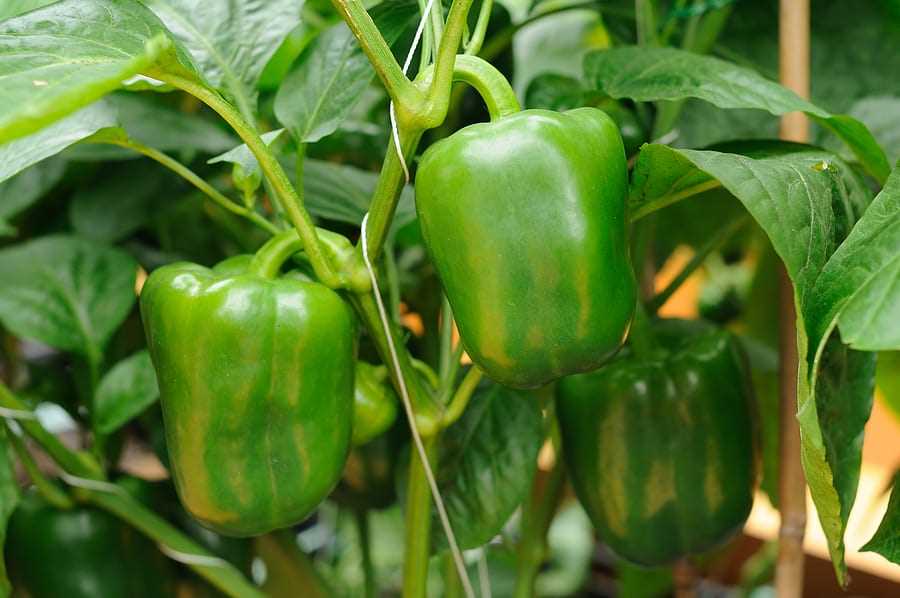
Organic feeding involves the use of natural materials to provide nutrients to the plants. This method is preferred by many gardeners who want to minimize the use of synthetic chemicals. Some commonly used organic fertilizers for sweet peppers include:
- Compost: Rich in organic matter and essential nutrients, compost can be added to the soil before planting or used as a top dressing during the growing season.
- Manure: Well-rotted animal manure, such as cow or chicken manure, can be added to the soil to provide a slow release of nutrients.
- Bone meal: A good source of phosphorus, bone meal can be mixed into the soil before planting to promote root development and flowering.
- Fish emulsion: Made from fermented fish, fish emulsion is a liquid fertilizer that can be applied to the plants as a foliar spray or poured directly into the soil.
Organic feeding not only provides essential nutrients to the plants but also improves soil fertility and encourages beneficial microbial activity.
2. Synthetic feeding
Synthetic feeding, also known as chemical feeding, involves the use of commercially available fertilizers that are formulated with specific concentrations of nutrients. This method provides a quick and targeted supply of nutrients to the plants. Some common synthetic fertilizers used for sweet peppers include:
- Nitrogen, phosphorus, and potassium (NPK) fertilizers: These fertilizers contain balanced amounts of the three major nutrients needed for plant growth.
- Micro-nutrient fertilizers: These fertilizers contain trace elements, such as iron, zinc, manganese, and molybdenum, which are essential for plant growth.
When using synthetic fertilizers, it is important to follow the manufacturer’s instructions and avoid over-fertilization, as excessive use can result in nutrient imbalances and environmental pollution.
Conclusion
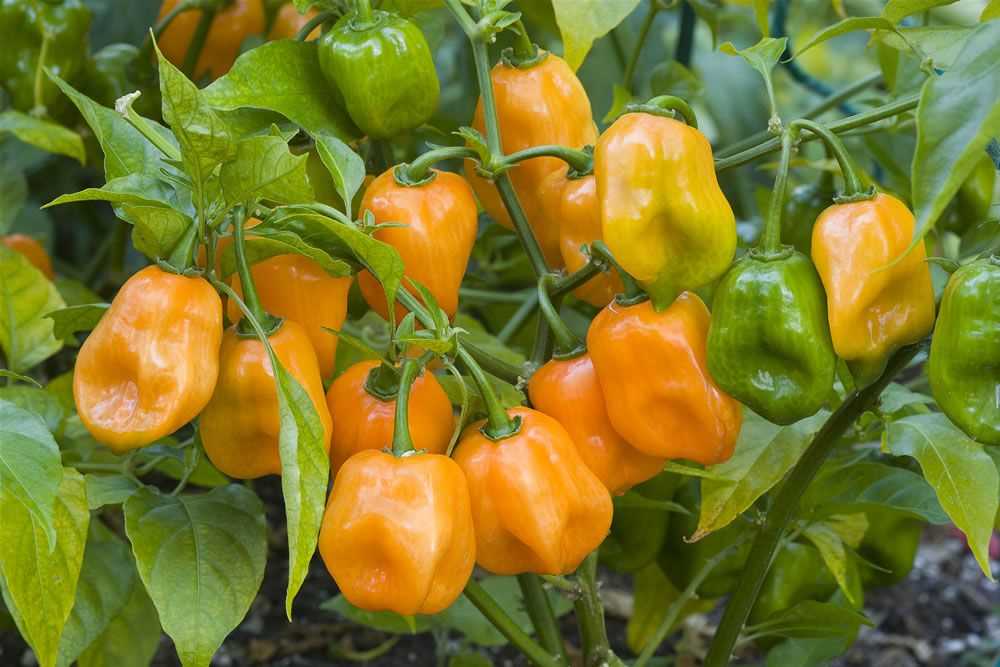
Both organic and synthetic feeding methods can be used to provide essential nutrients to sweet pepper plants. Organic feeding promotes soil health and sustainability, while synthetic feeding provides quick and targeted nutrient supply. The choice of feeding method depends on personal preferences, availability of materials, and desired outcomes.
One variant of feeding sweet pepper
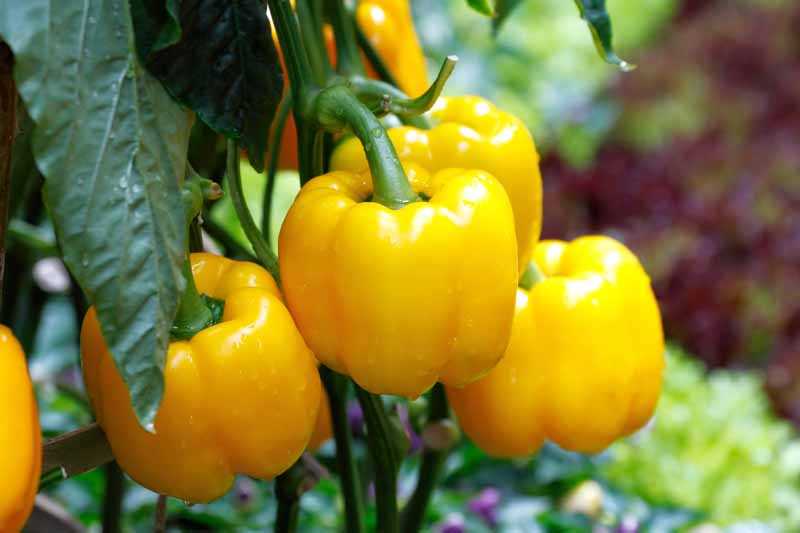
Introduction
Feeding sweet pepper is a critical aspect of its cultivation as it directly affects the plant’s growth, productivity, and nutritional value of the harvested fruits. While there are various methods of feeding sweet pepper plants, one variant stands out for its effectiveness.
The One Variant
The recommended variant of feeding sweet pepper plants involves the application of a nutrient-rich compost tea. Compost tea is made by steeping compost in water, allowing beneficial microorganisms and nutrients to leach into the liquid. This nutrient-dense liquid can then be used as a foliar spray or soil drench to provide essential nutrients to the sweet pepper plants.
Benefits of Compost Tea
- Enhanced Nutrient Availability: Compost tea contains a wide range of nutrients, including nitrogen, phosphorus, potassium, and micronutrients. These nutrients are readily available to the plants, promoting healthy growth and development.
- Promotes Beneficial Microorganisms: Compost tea is rich in beneficial microorganisms such as bacteria, fungi, and protozoa. These microorganisms help improve soil health, nutrient cycling, and disease resistance in sweet pepper plants.
- Stimulates Plant Immunity: The presence of beneficial microorganisms in compost tea can stimulate the plant’s immune system, making it more resistant to pests and diseases.
- Environmentally Friendly: Compost tea is an eco-friendly alternative to synthetic fertilizers. It promotes sustainable agricultural practices and reduces the reliance on chemical inputs.
Application
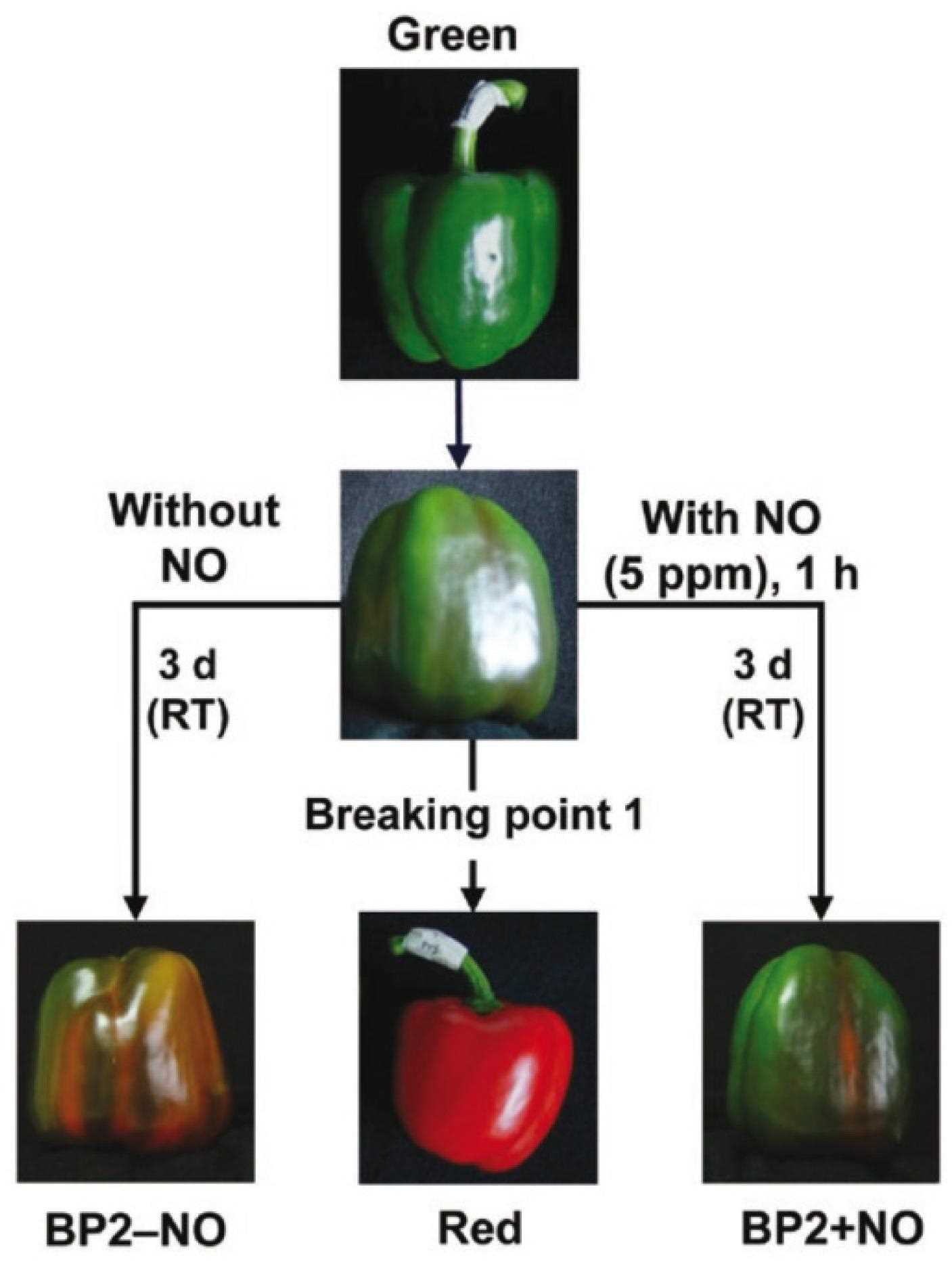
To apply compost tea to sweet pepper plants, follow these steps:
- Prepare the compost tea by steeping compost in water for 24-48 hours. The ratio of compost to water should be approximately 1:5.
- Strain the liquid to remove any solid particles, resulting in a clear, nutrient-rich liquid.
- For foliar spray: Fill a spray bottle with the compost tea and evenly spray the leaves of the sweet pepper plants, ensuring thorough coverage.
- For soil drench: Pour the compost tea directly around the base of the plants, allowing it to seep into the soil.
- Repeat the application every 2-3 weeks throughout the growing season.
Conclusion
Feeding sweet pepper plants with compost tea offers numerous benefits, including enhanced nutrient availability, improved soil health, and increased disease resistance. Incorporating this variant of feeding into your sweet pepper cultivation practices can result in healthier plants and higher yields.
The other variant of feeding sweet pepper
Another variant of feeding sweet pepper planted in the ground is by using organic fertilizers. Organic fertilizers are derived from natural sources and provide essential nutrients for plant growth.
Benefits of using organic fertilizers:
- Improved soil quality
- Promote healthy root development
- Enhanced nutrient absorption
- Slow release of nutrients
- Environmentally friendly
Types of organic fertilizers:
- Compost: Compost is made from decaying organic matter such as leaves, kitchen scraps, and yard clippings. It is a rich source of nutrients and can be added to the soil before planting or used as a side dressing during the growing season.
- Manure: Animal manure, such as cow or chicken manure, is a popular organic fertilizer. It is high in nitrogen, phosphorus, and potassium and can be applied directly to the soil or used to make compost.
- Seaweed: Seaweed is a natural source of trace minerals and growth hormones. It can be used as a foliar spray or added to the soil as a mulch.
- Bone meal: Bone meal is made from ground animal bones and is rich in phosphorus and calcium. It is a slow-release fertilizer and can be mixed into the soil before planting.
- Fish emulsion: Fish emulsion is a liquid fertilizer made from fish waste. It is high in nitrogen and can be applied as a foliar spray or added to the soil.
Application of organic fertilizers:
When using organic fertilizers, it is important to follow the instructions provided on the product packaging. Generally, organic fertilizers can be applied every 4-6 weeks, starting from planting and throughout the growing season. It is advisable to apply the fertilizers in smaller quantities and mix them well into the soil.
In conclusion, organic fertilizers offer a natural and sustainable way to feed sweet peppers planted in the ground. They provide essential nutrients for plant growth, improve soil quality, and have minimal impact on the environment.
Benefits of feeding sweet pepper in the ground
Nutrient-rich soil
Feeding sweet pepper plants in the ground provides them with a nutrient-rich soil environment. This is essential for the plants to grow and develop properly, as they require a wide range of nutrients to thrive.
By adding organic matter, such as compost or well-rotted manure, to the soil before planting, you can enrich the soil with essential nutrients like nitrogen, phosphorus, and potassium. This ensures that the sweet pepper plants have access to the nutrients they need for healthy growth.
Improved plant health
Feeding sweet pepper plants in the ground can significantly improve their overall health. When the soil is well-nourished, the plants are less likely to suffer from nutrient deficiencies, which can lead to stunted growth, yellowing leaves, and poor fruit production.
Providing the plants with a balanced fertilizer specifically formulated for vegetables can help maintain optimal nutrient levels in the soil. This can boost the plants’ immunity to diseases and pests, increasing their resistance and overall vigor.
Increased yield
Feeding sweet pepper plants in the ground can lead to increased yield and fruit quality. By ensuring that the plants have access to a rich source of nutrients, they can produce a higher number of fruits that are larger and more flavorful.
Regular feeding throughout the growing season is crucial for continuous plant growth and fruit production. This can be achieved by applying a slow-release fertilizer or using organic liquid fertilizers, which provide a steady supply of nutrients over an extended period.
Environmental sustainability
Feeding sweet pepper plants in the ground promotes environmental sustainability. By enriching the soil with organic matter and using organic fertilizers, you can reduce the need for synthetic chemicals and minimize the negative impact on the environment.
Organic farming practices help maintain soil health and biodiversity, while also protecting water sources from pollution. By feeding sweet pepper plants in the ground using organic methods, you contribute to a more sustainable and eco-friendly approach to gardening.
Cost-effective
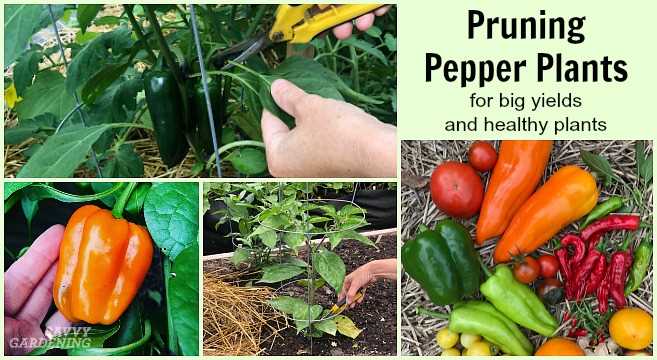
Feeding sweet pepper plants in the ground is a cost-effective way to provide them with the necessary nutrients. Instead of relying on expensive synthetic fertilizers, you can use organic materials that are often readily available, such as compost or manure.
Furthermore, properly nourished plants are less likely to suffer from nutrient deficiencies or diseases, reducing the need for costly remedies. Feeding sweet pepper plants in the ground not only benefits their health but also contributes to long-term savings in the garden.
Positive effects of feeding sweet pepper in the ground
1. Increased growth and yield
Feeding sweet pepper in the ground has a positive effect on the overall growth and yield of the plant. The added nutrients provide essential elements for the plant’s development, resulting in healthier and stronger plants. This leads to increased fruit production and higher yields.
2. Improved plant health
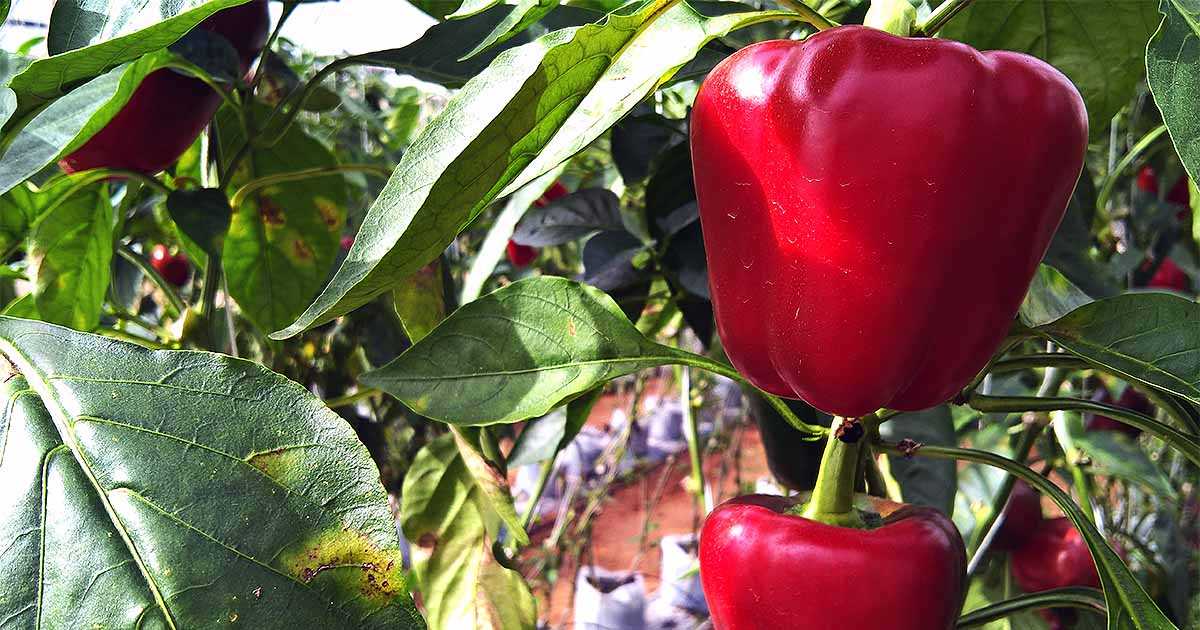
By feeding sweet pepper plants in the ground, you are supplying them with a balanced diet of nutrients, which helps improve their overall health. Proper nutrition strengthens the plant’s immune system, making it more resistant to diseases, pests, and environmental stresses.
3. Enhanced fruit quality
The nutrients provided through feeding sweet pepper in the ground contribute to the quality of the fruits. Adequate nutrition supports proper fruit development, resulting in larger, firmer, and more flavorful peppers. Additionally, it can enhance the color and appearance of the fruits, making them more visually appealing.
4. Extended fruiting period
Feeding sweet pepper plants in the ground can extend their fruiting period. By providing them with the necessary nutrients, the plants can continue producing fruits for a longer time, ensuring a more extended harvest season. This is especially beneficial for gardeners who want a continuous supply of fresh sweet peppers.
5. Overall plant vigor
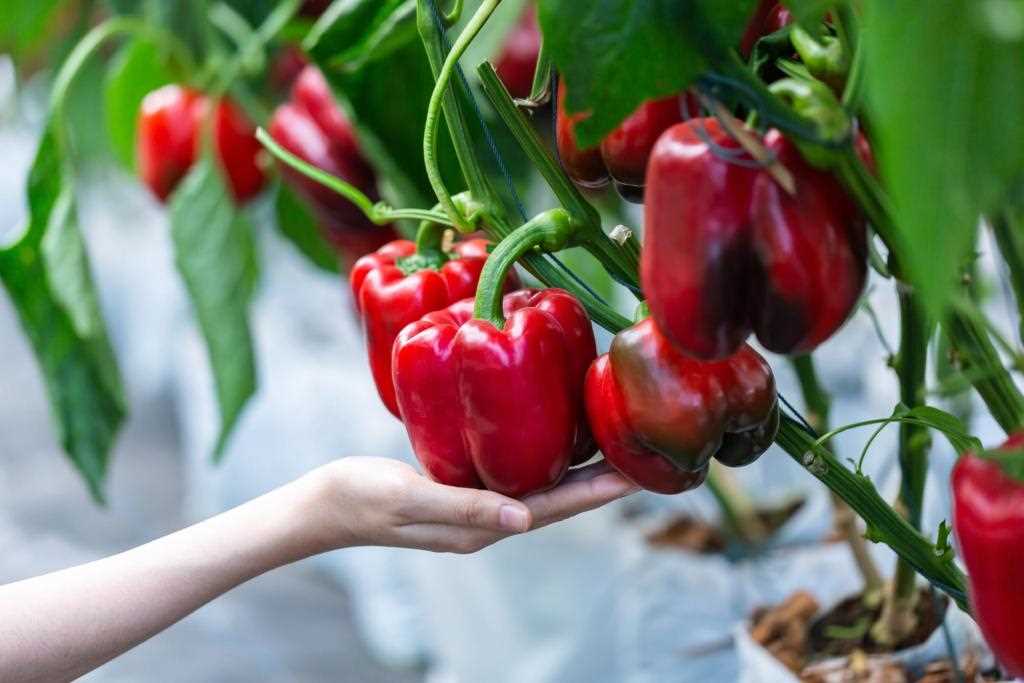
Proper nutrition obtained through feeding sweet pepper in the ground promotes overall plant vigor. The added nutrients support essential physiological functions, such as photosynthesis and nutrient absorption, which are crucial for optimal plant growth. This results in healthier, more robust plants that are better able to withstand environmental and biological stressors.
6. Sustainable gardening
Feeding sweet pepper plants in the ground can be part of a sustainable gardening approach. By providing plants with the nutrients they need through organic or eco-friendly fertilizers, you can minimize the use of synthetic chemicals that may have negative effects on the environment. This promotes a more environmentally friendly and sustainable way of growing sweet peppers.
Conclusion
Feeding sweet pepper plants in the ground has numerous positive effects, including increased growth and yield, improved plant health, enhanced fruit quality, extended fruiting period, overall plant vigor, and sustainable gardening practices. By ensuring the plants receive the necessary nutrients, you can enjoy a bountiful harvest of healthy and delicious sweet peppers.
Comparison of the two feeding methods
Feeding sweet pepper plants is an essential part of their growth and development. There are two common methods of feeding sweet pepper plants planted in the ground, and both methods have shown positive effects on the plants. Here, we will compare these two feeding methods and discuss their benefits.
Method 1: Organic fertilizer
One popular method of feeding sweet pepper plants is through the use of organic fertilizer. Organic fertilizers are derived from natural sources and are rich in nutrients that are essential for plant growth. These fertilizers provide a slow release of nutrients, ensuring a steady and continuous supply to the plants.
Organic fertilizers have several benefits:
- They improve soil structure and promote beneficial microbial activity.
- They enhance nutrient availability and uptake by the plants.
- They help develop strong and healthy root systems.
- They contribute to long-term soil fertility and sustainability.
Method 2: Liquid fertilizer
Another method of feeding sweet pepper plants is by using liquid fertilizer. Liquid fertilizers are water-soluble and are quickly absorbed by the plants, providing an immediate nutrient boost. They are often applied through foliar spraying or as part of the watering routine.
Liquid fertilizers offer several advantages:
- They provide a quick and targeted nutrient supply to the plants.
- They are easily absorbed by the plant’s leaves and roots.
- They can be adjusted in concentration based on the plant’s needs.
- They are convenient to use and allow for easy application.
Both feeding methods have shown positive effects on sweet pepper plants when planted in the ground. The choice of method may depend on various factors, such as the availability of fertilizers and personal preferences. It is recommended to experiment with both methods and observe how the plants respond to determine the most suitable feeding approach for your sweet pepper plants.
Similar impact of both feeding methods on sweet pepper
The effectiveness of two different feeding methods for sweet pepper plants has been found to be equally positive.
Method 1: Traditional soil fertilization
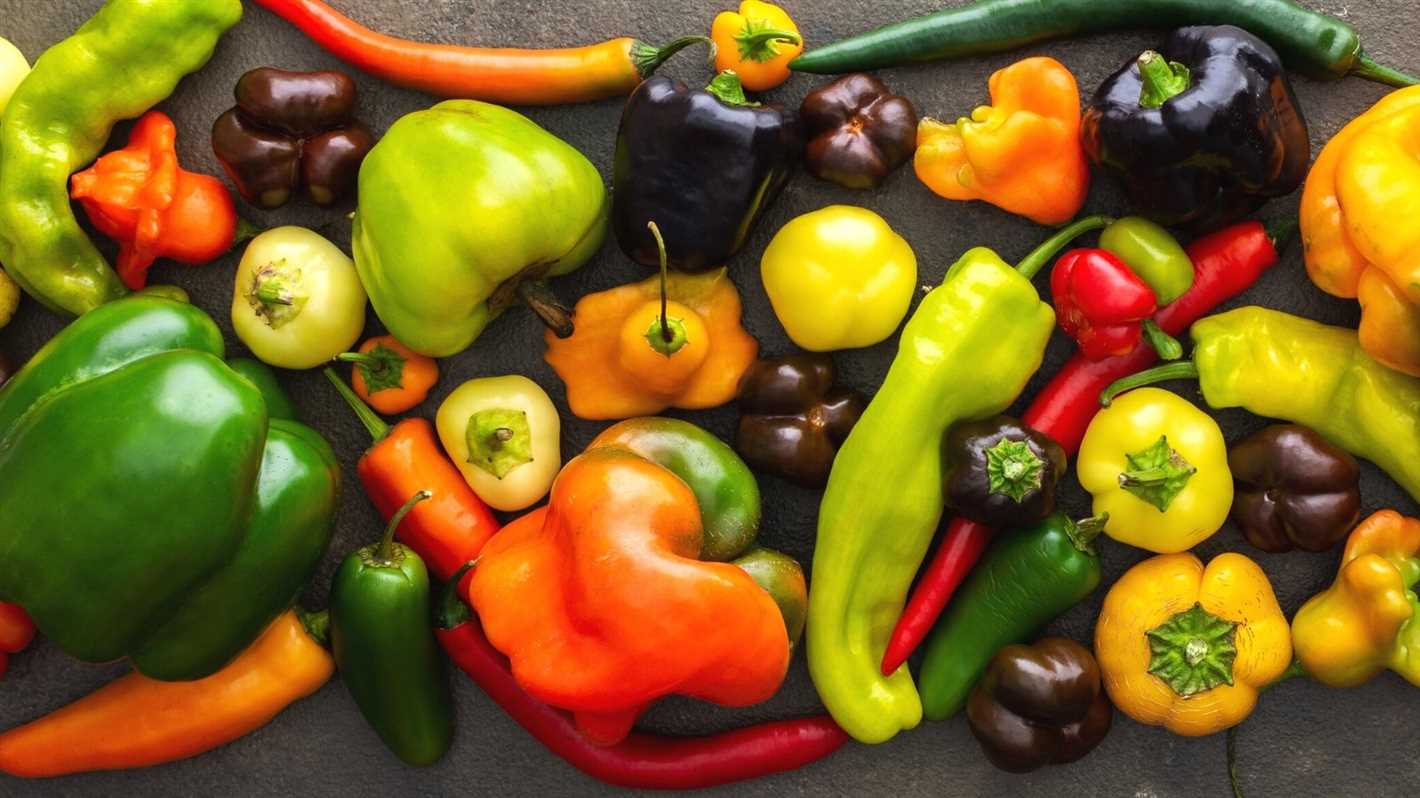
In this method, traditional soil fertilizers are used to provide nutrients to the sweet pepper plants. The fertilizers are applied to the soil before planting the seeds or seedlings.
Benefits of this method include:
- Easy application and availability of fertilizers
- Uniform distribution of nutrients in the soil
- Promotes overall plant growth and development
Method 2: Foliar feeding
In this method, a liquid fertilizer solution is sprayed directly onto the leaves of the sweet pepper plants. The leaves absorb the nutrients from the solution, allowing for faster nutrient uptake.
Benefits of this method include:
- Direct and efficient nutrient absorption
- Provides a quick boost of nutrients to the plants
- May help improve plant resistance to pests and diseases
Despite the differences in application, both feeding methods have shown to have a similar positive impact on the growth and productivity of sweet pepper plants.
| Feeding Method | Benefits |
|---|---|
| Traditional soil fertilization | Easy application and availability of fertilizers Uniform distribution of nutrients in the soil Promotes overall plant growth and development |
| Foliar feeding | Direct and efficient nutrient absorption Provides a quick boost of nutrients to the plants May help improve plant resistance to pests and diseases |
In conclusion, whether using traditional soil fertilization or foliar feeding, sweet pepper plants can benefit from both methods equally. Gardeners can choose the method that suits their preferences and gardening practices, knowing that both methods can result in a positive impact on the growth and productivity of sweet pepper plants.
Factors to consider when choosing a feeding method for sweet pepper
When it comes to feeding sweet pepper plants, there are several factors to consider in order to choose the most effective method. These factors include:
- Plant requirements: Understanding the specific nutrient needs of sweet pepper plants is essential when selecting a feeding method. Sweet peppers require a balanced diet of macronutrients (such as nitrogen, phosphorus, and potassium) as well as micronutrients (such as iron, zinc, and manganese).
- Soil composition: Assessing the existing soil composition is crucial in determining the appropriate feeding method. Conducting a soil test can provide valuable information about the soil’s pH, nutrient levels, and organic matter content. Depending on the soil condition, different feeding methods may be required.
- Time and labor: Consider the available time and labor that can be dedicated to feeding sweet pepper plants. Some feeding methods, such as slow-release fertilizer pellets, require less frequent applications and can save time and effort compared to liquid fertilizers that need to be applied more frequently.
- Budget: Determine the budget available for feeding sweet pepper plants. Different feeding methods vary in cost, so it’s essential to consider the long-term expenses associated with each option.
- Environmental impact: Environmental considerations should not be overlooked when choosing a feeding method. Some fertilizers may have negative effects on the environment, such as leaching into water sources or causing pollution. Opting for organic and environmentally friendly fertilizers can help minimize the impact on the surrounding ecosystem.
By carefully evaluating these factors, growers can make an informed decision about the feeding method that best suits their sweet pepper plants and aligns with their specific needs and preferences.
“Question-Answer”
What are the two variants of feeding sweet pepper?
The two variants of feeding sweet pepper are planted in the ground.
What is the effect of planting sweet pepper in the ground?
The effect of planting sweet pepper in the ground is equally positive for both variants.
Are there any other methods of feeding sweet pepper?
Yes, there may be other methods of feeding sweet pepper, but this article specifically focuses on the two variants of planting in the ground.
Can you explain the difference between the two variants of feeding sweet pepper?
The article does not mention the specific difference between the two variants of feeding sweet pepper. It only states that the effect is equally positive for both.
Are there any factors that may affect the positive effect of planting sweet pepper in the ground?
The article does not mention any specific factors that may affect the positive effect of planting sweet pepper in the ground. It simply states that the effect is equally positive for both variants.







